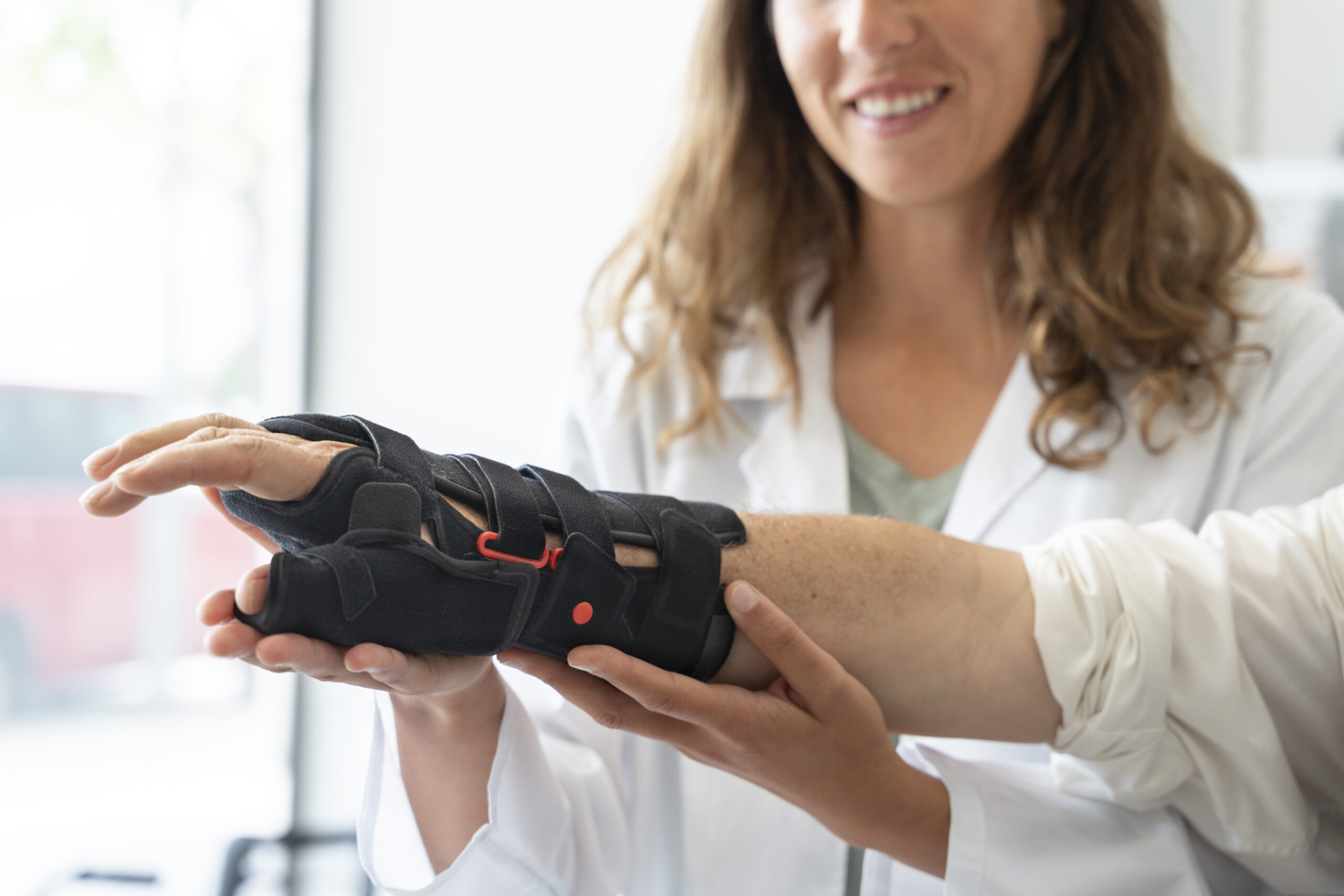

Patients with chronic wrist pain, post-traumatic arthritis or wrist destruction in rheumatoid arthritis have a unique opportunity to solve their problem. They no longer have to accept partial or total restriction of mobility in the wrist to relieve pain and improve their condition. Thanks to a new special surgical method, AGEL Košice-Šaca Hospital is able to provide all modern options for solving post-traumatic and degenerative wrist conditions by means of an artificial joint that relieves patients of pain while preserving the full range of motion of the wrist. The topic is discussed by Tomáš Ševčík, MD, MPH, primary of the One-day Health Care at the AGEL Košice-Šaca Hospital.
What makes this operation unique? What is its official name?
It is an artificial joint – a wrist endoprosthesis. It is unique mainly in the fact that until now such a prosthesis has not been registered in Slovakia and we could not even offer it to our patients as an option to solve their difficulties.
How does one proceed during it?
Classically, as in most wrist reconstructive procedures, an incision is made on the back of the wrist, approximately 8 to 10 centimetres long. The joint capsule is opened, the damaged articular surfaces are removed, any deformity is straightened and the implant is fitted. The principle is very similar to other artificial joints, such as the hip.
What components do you use during the procedure?
The components are titanium and have a special coating on the surface, for better ingrowth into the bone.
When was the first operation performed? How was it performed?
The first two surgeries were performed at our clinic, the Department of Musculoskeletal and Sports Medicine at AGEL Košice – Šaca Hospital on 3 June 2024. The course was smooth and both patients are already enjoying their new wrists.
So far you are the only clinic in Slovakia that can perform this type of surgery?
Yes, we are currently the only workplace that can perform this type of surgery in Slovakia. It is conditioned by the company that manufactures these implants. It is a Swedish company, which conditions the surgery to be performed by a given doctor only after the completion of a special surgical cadaveric course at its headquarters in Linkoping. It is assumed that in the course of time one more workplace will be added in Slovakia which will perform the procedure.
How does the new method differ from the previous one?
Until now, we have only been able to offer partial or total wrist immobilization to our patients with various wrist injuries, whether from wear and tear after accidents or rheumatoid arthritis. This meant that patients had to accept partial or total restriction of mobility in the wrist for pain relief and improvement of their condition. This is no longer the case. The artificial joint relieves patients of pain while maintaining full range of motion in the wrist.
Can you describe the benefits that the new type of surgery brings to patients?
The benefits are improved range of motion, pain-free movement in the wrist, and preservation of muscle strength in the hand. This is an exceptional feat that finally puts us in line with other countries in Europe and we are able to provide our patients with up-to-date, state-of-the-art options for dealing with post-traumatic and degenerative conditions of the wrist.
How long does the operation take?
The standard performance lasts 60 – 80 minutes.
What does the subsequent recovery look like?
Postoperatively, the patient has his wrist in a cast splint for 6 weeks. Subsequently, rehabilitation treatment is started. This should optimally last about 6 – 8 weeks. That is, the total recovery time is 3 months.
Is it a procedure covered by the insurance company?
Yes, the procedure is fully covered by public health insurance.
Who is indicated for it?
Patients with chronic wrist pain, where degenerative wrist changes and deformity are already present, are indicated for this procedure. Thus, the most common patients are those with post-traumatic wrist arthrosis and those with wrist destruction in rheumatoid arthritis.
How often is it done?
The assumption is 15 – 20 surgeries per year at our workplace.
